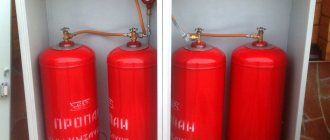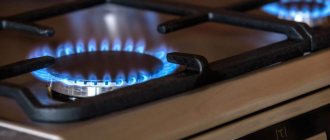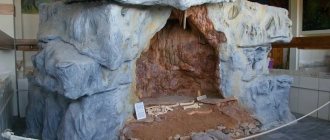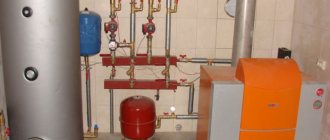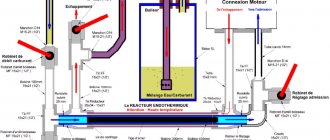The owner of a private house, even at the construction stage of the building, is faced with the question of how and how the home will be heated. There are plenty of options. The boiler is the main element of the heating system. Various modifications of devices operate on coal, wood, natural or liquefied gas. Let's say it is more convenient for the owner of a private house to use liquefied gas. What is the consumption of liquefied gas for heating a house of 150-200 m2?
Liquefied gas means a symbiosis of ethylene, propane, butane and other chemical compounds. It releases more energy than other fuels. This is a scientifically established fact.
Energy consumption for heating a house of 150-200 m2: simple calculations
You can calculate the energy consumption for heating a house of 150-200 m2 using the simplest formula, based on which 1 kilowatt per hour is needed to heat 10 square meters of a building. It turns out that 10 square meters will require 24 kilowatts per day, and 200 square meters will require 480 kilowatts. This formula takes into account all the building’s “needs” for heat.
It is necessary to take into account not only the area of the building, but its cubic volume, which involves entering data such as the height of the walls.
If we talk about a standard building, where the height of the walls does not exceed 250 centimeters, then the same simple formula can be used.
It is applicable both if the house is used permanently and when it is used as a temporary home. This is what experienced builders advise.
If a house has a standard wall height of 2.5 meters, then gas consumption for heating is calculated using a simple formula - 10 square meters “consume” 1 kilowatt of energy
If the house is your fortress, and the “weather” inside is an important factor for you, then it is advisable to also include the thermal stability of the entire house and the temperature values outside the window when calculating the cost of heating a house of 150-200 m2. To do this you will have to turn to professionals. Is this option not suitable for you? Then we use a simple formula.
You can calculate how much energy your home consumes over a certain time using our calculator.
Important: the gas boiler does not operate 24 hours a day. Typically, the operating mode is as follows: the equipment works for 1 hour, rests for 1 hour. This means that, according to a simple formula, the energy consumption per day to heat a 200 m2 house will be 240 kW.
Liquefied gas consumption
Many modern boilers are designed in such a way that they can burn liquefied gas even without replacing the burner. Therefore, of interest are not only the costs of consuming methane gas, but also propane-butane supplied in cylinders. Finding out these values will be useful for those homeowners who plan to organize autonomous gas heating due to the temporary lack of mains fuel.
So, to calculate the amount of gas for a building with an area of 100 m2 that burns in 1 hour, you need to substitute the calorific value of liquefied gas into the previous formula and recalculate it again. At the same time, do not forget that the consumption of natural gas is calculated in liters and m3, and liquefied gas - in kilograms, which then need to be converted into liters. So, taking into account the calorific value of gas in the amount of 12.8 kW / kg (46 MJ / kg), we obtain:
5 / (12.8 x 0.92) = 0.42 kg / h of liquefied gas.
1 liter of propane-butane weighs 0.54 kg, which means that heating a house with a gas boiler in 1 hour will require 0.42 / 0.54 = 0.78 liters of liquefied gas. Per day - this is 18.7 liters, per month - 561 liters. Taking into account that a regular cylinder contains about 42 liters of fuel, in a month to heat a building of 100 m2 you will have to use 561 / 42 = 14 cylinders, this is quite a lot and will not be cheap.
As a summary, let us present the results according to which the approximate monthly consumption of liquefied gas for heating a house is:
- 100 m2 – 561 l;
- 150 m2 – 841.5 l;
- 200 m2 – 1122 l;
- 250 m2 – 1402.5 l.
Costs of a gas boiler using liquefied gas: calculating the indicators
Over the entire heating season, a house with an area of 200 square meters will consume about 48 thousand kilowatts of thermal energy. Liquefied gas has its own ability to “create heat”. It shows the ratio of a unit of fuel to the energy released by it during combustion (combustion).
Scientists have calculated that the calorific value of one cubic meter of liquefied gas is equal to 6.55 kW of heat energy.
One liter of liquefied gas emits 6.55 kilowatts of energy when burned
To find out how much reduced gas is needed to heat a house of 200 square meters, we take the amount of energy that the building will consume during the entire cold period (48 thousand kilowatts) and divide it by the calorific value of this type of fuel (6.55 kW). This turns out to be approximately 7330 liters.
Important: experts recommend adding at least another 10 percent to the resulting figure. This must be done because not all 100 percent of the energy will be spent specifically on heating; some will “remain” in the pipes and the boiler itself.
If we add another 10 percent to 7330 liters, we get 8063 liters. This will be the consumption of a gas boiler running on liquefied gas.
What increases gas consumption
Gas consumption for heating, in addition to its type, depends on the following factors :
- Climatic features of the area. The calculation is carried out for the lowest temperature indicators characteristic of these geographical coordinates;
- The area of the entire building, its number of floors, the height of the rooms;
- Type and presence of insulation of the roof, walls, floor;
- Type of building (brick, wood, stone, etc.);
- The type of profile on the windows, the presence of double-glazed windows;
- Organization of ventilation ;
- Power in the limit values of heating equipment.
The year the house was built and the location of the heating radiators are also important.
Nuances and subtleties
It is important to understand what the liquefied gas consumption will be for heating a house of 150-200 m2 in order to take care of how the fuel is stored. You can hold it:
- in cylinders. Their volume is small - from 10 to 50 liters. Regular replacement or refilling is required, which is not very convenient. In fact, approximately 35 liters will be needed per day for heating with liquefied gas;
- gas holders. This is a special storage (reservoir) for blue fuel. Can hold from 200 to 1000 liters depending on the dimensions. Such a structure must be built in accordance with safety requirements and standards. To refill the gas tank, you will need to call specialists. Attempts on your own may result in fires and explosions.
Gas holder - a container for storing liquefied gas for heating - can hold up to 1000 liters of “blue fuel”
As for the prices for such heating, they depend on the region where you live.
The cost of a liter of liquefied gas varies from 12 to 20 rubles. Based on the average value of 15 rubles, during the heating season you will spend approximately 121 thousand rubles on a building with an area of 200 square meters.
Any other type of fuel will be cheaper. For natural blue fuel - approximately 40 thousand rubles, for firewood and coal - about 60 thousand rubles per heating season.
Payment procedure
The main indicator on which the calculation result depends is the power consumption for heating. In accordance with the standards, it is calculated for each room at the street temperature in winter during the coldest five-day period. Such calculations are quite complex and are carried out with the aim of correctly selecting boiler equipment.
In reality, thermal energy is consumed on average by half less than calculated. This is understandable, because during the heating season the outside air temperature fluctuates from above zero to the lowest, and the gas consumption rate also changes. Taking this point into account, we will follow the generally accepted path of determining the approximate amount of heat for a building. That is, instead of 100 W of energy required for each square meter of area, let’s take the real average value - 50 W / m2 for 1 hour.
Accordingly, a house with an area of 100 m2 will consume 5000 W / h or 5 kW / h. To calculate the volumetric amount of fuel for a given area, the following formula is used to calculate gas costs for heating:
- L = Q / (qH x 0.92), where:
- L – volumetric fuel consumption for 1 hour, m3;
- Q – required thermal power for heating, kW;
- qН – lower heating value of fuel, for natural gas equals 10.175 kW/m3;
- 0.92 – efficiency of a boiler plant burning fuel.
Thus, the hourly calculation of gas consumption for heating a house with an area of 100 m2 looks like this:
5 / (10.175 x 0.92) = 0.53 m3/h natural gas.
Then everything is simple: per day the volume of fuel will be 0.53 x 24 = 12.7 m3, and per month - 12.7 x 30 = 381 m3. Those homeowners who find it convenient to determine all values relative to 1 m2 of area, so that they can subsequently calculate the consumption for any building, are asked to divide the resulting value by the square footage of the building. Then it turns out that per month the gas consumption per 1 m2 is 3.81 m3.
Knowing all the values, you can easily determine the volume of fuel required to heat a house of a given quadrature per year, that is, during the heating season. To do this, it is enough to find out the number of days in the heating season and multiply the daily consumption of natural gas by this value.
It should be noted that with this algorithm, the accuracy of the calculations is not too high and is applicable at the stage of economic calculation of the cost of heating and comparison with heating with other coolants. By the way, the above formula is suitable for determining the mass or volumetric flow rate of other types of fuel, both solid and liquid.
We take out a calculator
In order to preliminarily determine the average consumption of the future system, it is necessary to calculate the planned heating area, since the power of the gas boiler is selected based on this parameter. Which in turn, as we already know, determines future consumption.
It is generally accepted that to heat 10 square meters of a room with ceilings no more than 3 meters, 1 kW of heater power is required. We further assume that 1 kW of boiler power consumes approximately 0.112 cubic meters of gas.
For example, let's take a house with an area of 100 square meters. For heating you will need a gas boiler with a capacity of at least 10 kW. It’s easy to calculate - 1.12 m3 of gas will be required per hour. If the heating system of the house is designed competently and professionally, and the house is sufficiently insulated and free of unnecessary heat loss, then in the cold winter season the gas boiler will turn on the burner for about 14 hours a day.
Based on previous calculations, we determine that the boiler will consume 14 x 1.12 = 15.68 cubic meters of natural gas per day. Therefore, per month it turns out: 15.68 x 30 approximately 470 m3.
Total
Undoubtedly, when installing an individual heating system, professional calculation of all parameters and the correct selection of an individual gas boiler in terms of power and other parameters are very important. When purchasing such a unit, count on long-term operation, and for long-term savings, choose a unit with high efficiency, albeit more expensive. This will make it possible to optimize gas consumption and, as a result, save your money.
Gas heating of a private home is convenient in all respects - both from the point of view of ease of use and from the point of view of quite acceptable energy tariffs. In any case, it has few competitors in terms of efficiency, with a well-functioning system. But not everyone can afford this for the banal reason that not all populated areas, and even more so, holiday villages, are connected to gas mains.
And yet, a solution is visible - it is possible to use imported liquefied gas for heating needs, organizing its supply to the heating boiler from cylinders or from a large underground storage facility - a gas holder
But at the same time, information on average fuel consumption is of particular importance - it is necessary not only to plan the heating budget, but also to organize the replenishment of your reserves in a timely manner
What should I do? It's okay - a calculator for liquefied gas consumption for heating will help us in this matter.
Explanations for conducting calculations will be given below in the text block.
The most energy-intensive gas equipment in a residential area is a gas boiler, which provides water heating in the heating system, and often for domestic needs. Individual gas heating is becoming increasingly attractive to consumers who do not want to depend on the problems of centralized heating.
Gas consumption during autonomous gasification of a house: statistical method
As statistics show, the average gas consumption from a gas tank for the entire heating season is approximately 20 liters per meter of heated area of the house (with a total housing area of up to 200 square meters), based on a number of assumptions, in particular:
- The cottage insulation work was carried out in strict compliance with all GOST requirements;
- The calculated temperature in the cold season is taken as the average value for the northeastern regions of Russia;
- The influence of a number of factors - the material of the walls of the building, the wind rose, the amount and type of precipitation and others - was not taken into account in the calculation;
- The power of the boiler equipment is taken based on the condition of equality to the formula: heated area/10;
- The number of residents does not exceed 6 people, each of whom uses gas only for heating the premises, providing hot water supply and cooking;
- The average production of LPG from a gas tank for the entire heating season is approximately 20 liters per meter of heated area with a total housing area of up to 200 square meters. In the case of a larger area, the relative consumption of hydrocarbons per square meter will decrease
In the case of a larger room area, the relative consumption of hydrocarbons per square meter will decrease.
For example, let's calculate gas consumption
for a house of 100 m2 and 200 m2
.
Fuel consumption estimation
To determine fuel consumption, we need to know the following:
- Duration of the heating season;
- Boiler power;
- Fuel consumption by equipment per unit time.
Let's assume that our heating season lasts 6 months.
What boiler power is needed to heat a 150 square meter house? On average, 1 square of area will require 0.1 kW of energy. In our case, we will need a 15 kW boiler (150 × 0.1).
Next, we need to find out how much gas such equipment consumes per unit of time, for example, per hour. This indicator is indicated in the instructions, and for our calculations we are currently using the average option for a 15 kW device - 1.68 cubic meters per hour.
Since we will not heat it around the clock, we will assume that the boiler operates 10 hours a day. Thus, per day we will process 16.8 cubic meters of gas into heat. Our heating season has 180 days, during which 3,024 cubic meters of gas will be consumed.
This figure should be multiplied by the cost per cubic meter for your region, and you will get estimated heating costs. Knowing them, you will be able to plan your budget and consider the feasibility of taking measures to save gas consumption.
What is the gas consumption for heating with a gas holder? Example
Example of liquefied gas consumption and total costs associated with the operation of an autonomous gas supply system for the heating season (6 months)
| House area 160 sq.m. | House area 350 sq.m. | |
| Heating equipment power, kW | 24 | 44 |
| Gas consumption, l | 3000 | 6650 |
| Gas cost | 14 | 14 |
| Total gas costs, rub | 42000 | 93100 |
There is no need to add the cost of ordering a gas station to these figures, because it is already taken into account in the gas tariff we offer. Thus, you can adequately assess the final cost of preparing for the heating season in the Moscow region.


